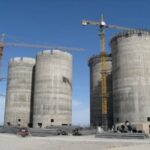Silo Cleaning Safety for Singapore Food and Beverage
 Silo cleaning is an essential aspect of maintaining hygiene and efficiency in food and beverage manufacturing plants. However, it poses significant safety risks that cannot be overlooked.
Silo cleaning is an essential aspect of maintaining hygiene and efficiency in food and beverage manufacturing plants. However, it poses significant safety risks that cannot be overlooked.
In Singapore, where strict regulations govern food production, adhering to safety requirements during silo cleaning is paramount to protect workers and uphold industry standards.
Compliance with Regulations
Singapore’s food and beverage industry operates under stringent regulations enforced by agencies like the Singapore Food Agency (SFA) and the Ministry of Manpower (MOM). Manufacturers must comply with guidelines outlined in the Environmental Public Health Act and Workplace Safety and Health Act. These regulations encompass safety protocols for all aspects of production, including silo cleaning.
Risk Assessment
Before undertaking any silo cleaning activity, a comprehensive risk assessment must be conducted. This assessment identifies potential hazards such as confined spaces, toxic residues, and mechanical risks. Understanding these risks allows companies to implement appropriate safety measures and develop a tailored cleaning plan.
Training and Certification
Personnel involved in silo cleaning must undergo rigorous training to handle specialized equipment and understand safety procedures. Certification programs offered by accredited institutions ensure that workers possess the necessary skills and knowledge to perform their tasks safely. Regular refresher courses keep workers updated on the latest safety protocols.
Personal Protective Equipment (PPE)
Adequate PPE is essential to mitigate risks associated with silo cleaning. This includes protective clothing, respiratory masks, safety harnesses, and gas detectors. Employers must ensure that workers wear the appropriate PPE at all times and conduct regular inspections to verify its effectiveness.
Proper Ventilation and Monitoring
Adequate ventilation is crucial when working in confined spaces like silos to prevent the buildup of toxic gases or oxygen deficiency. Continuous monitoring of air quality using gas detectors is necessary to detect any deviations from safe levels. Emergency procedures should be in place in case of gas leaks or other unforeseen hazards.
Use of Specialized Equipment
Utilizing specialized cleaning equipment designed for silo maintenance reduces the need for manual intervention, minimizing worker exposure to hazards. Automated cleaning systems, vacuum trucks, and robotic technologies can efficiently remove residues while keeping workers at a safe distance.
Conclusion
Prioritizing safety in silo cleaning operations is imperative for food and beverage manufacturers in Singapore. By adhering to regulatory requirements, conducting thorough risk assessments, providing adequate training and PPE, implementing proper ventilation and monitoring, and utilizing specialized equipment, companies can safeguard their workers and maintain a hygienic production environment. Safety should always be the top priority in silo cleaning to ensure the well-being of workers and the integrity of food products.




